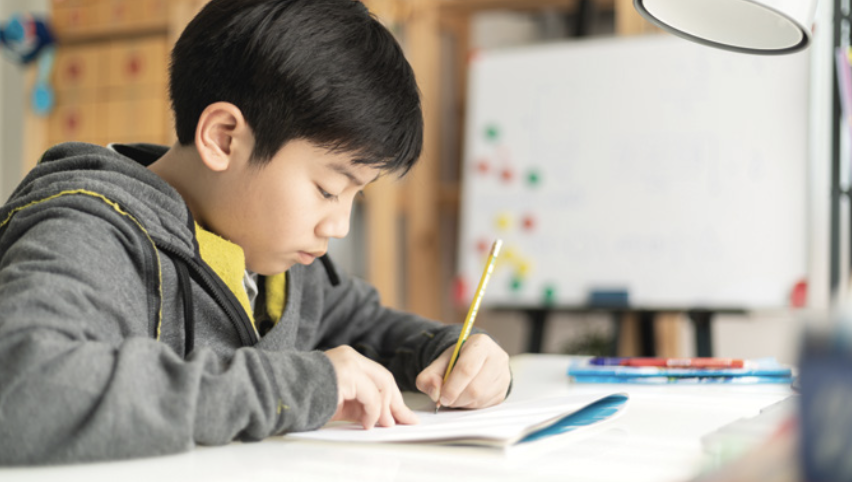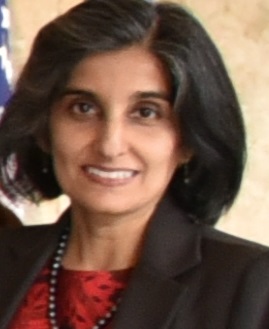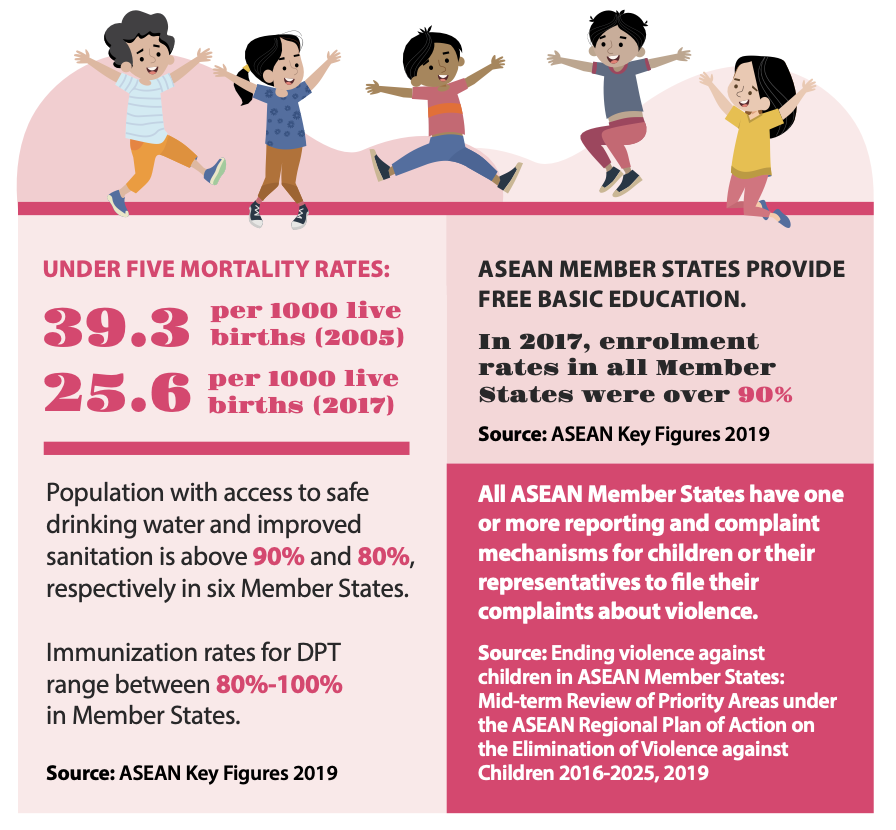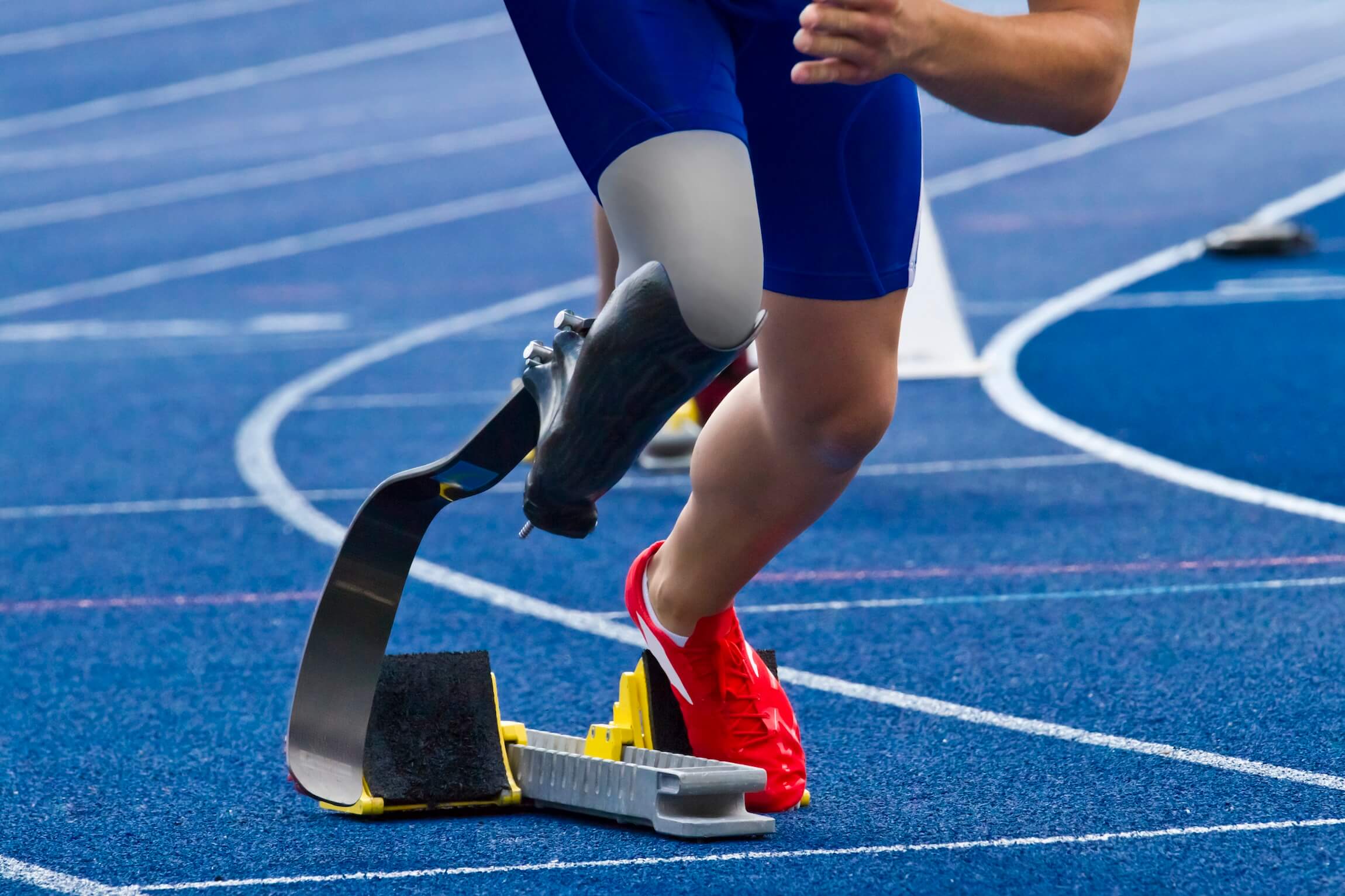




Children in ASEAN are living in a rapidly changing world brought about by technological advances and demographic shifts. It is crucial that children have their basics needs fulfilled to enable them reach their potential, and also be equipped with 21st century skills to manage anticipated long-term challenges.
ASEAN’s commitment towards improving and ensuring the well-being its children is clearly demonstrated through the various ASEAN initiatives.
Towards Improved Health and Education
ASEAN’s success in reducing poverty over the past decades has resulted in improved child mortality and morbidity rates. The majority of ASEAN’s population, which includes children, have access to safe drinking water and improved sanitation. Immunisation rates for children under one have also increased. Nevertheless, sizable pockets of poverty continue to exist, resulting in malnutrition among children under five in the region. The 2016 Regional Report on Nutrition Security in ASEAN, Volume 1 notes that 17.7 million children are affected by stunting, 5.4 million children are wasted, while 4.5 million children are overweight. Also of concern are the 21.4 million children under five who suffer from anemia. To address this problem, ASEAN adopted the ASEAN Leaders’ Declaration on Ending All Forms of Malnutrition. The declaration encourages a multi-sectoral approach in scaling up interventions to end all forms of malnutrition.
Children in ASEAN have benefitted from improved access to education, with over 90 per cent of children enrolled in basic education. Emphasis is also given to increasing access to early childhood education. The Bangkok Declaration on Advancing Partnership in Education for 2030 Agenda for Sustainable Development in ASEAN reaffirms ASEAN’s commitment to ensure that children in the region are provided with quality education and lifelong learning. The declaration also promotes inclusive education to address the needs of vulnerable groups such as out-of-school children and children with special needs.
A major challenge ASEAN faces is increasing enrolment rates at the secondary education level, which is currently at 70 per cent.
The Children in ASEAN: 30 Years of the Convention on the Rights of the Child publication notes gender disparities which prevent boys and girls from completing their schooling. Boys tend to leave school to enter the labour market, while girls are taken out of school to attend to household chores and child-rearing. These gender disparities are being addressed through various ASEAN initiatives.
Strengthening Children’s Rights
Last year marked the 30th anniversary on the Convention on the Rights of the Child. ASEAN joined the international community in celebrating children’s rights in the region, noting that by 1995, all countries in the region had ratified the Convention on the Rights of the Child and taken steps towards its implementation. Nevertheless, disparities continue to exist among different sections of society, such as children with disabilities and migrant children.
The adoption of the ASEAN Enabling Masterplan 2025: Mainstreaming the Rights of Persons with Disabilities addresses the needs of children with disabilities. Among others, it encourages for full and effective participation and inclusion of persons with disabilities, including children. Countries in the region have undertaken various initiatives to create a more disabled friendly environment.
High migration rates in the region have resulted in various challenges. UNICEF estimates that as of 2017, there are 1.2 million international child migrants in ASEAN. Migrant children face discrimination, violence and exploitation. Recognising these vulnerabilities, ASEAN adopted the ASEAN Declaration on the Rights of Children in the Context of Migration. The declaration resolves to provide basic services, such as health and psychosocial support to children in the context of migration. It also encourages for coordination with respective consular officers or legal authorities to facilitate birth certificates. The rights of migrant children are further supported through the ASEAN Declaration on Strengthening Education for Out-Of-School Children and Youth, which recognises that the right to education is a basic right, and promotes accessibility of education regardless of nationality.
ASEAN has also made commitments and taken action to address the problem of violence against children. ASEAN adopted the Declaration on the Elimination of Violence against Children in 2013, which was followed by a Regional Plan of Action on the Elimination of Violence against Children in 2016. The report on Ending Violence against Children in ASEAN Member States: Mid-term Review of Priority Areas under the ASEAN Regional Plan of Action on the Elimination of Violence against Children 2016-2025 notes progress on the implementation of this action plan.
All countries in the region have introduced legal reforms to improve the protection
of children, and continue to develop legislative and policy frameworks.
Six countries have implemented programmes to address violence against children at schools, while seven countries have mechanisms to respond to violence against children in emergency situations. In addressing the root causes of violence against children, there is a need to shift from a reactive and responsive system to a more proactive prevention approach.
Childhood is characterised by better access to the internet and social media, which means more opportunities to communicate and interact. Growth of the digital world however, has brought new vulnerabilities of being exploited and abused. Recognising that the continuous development of digital technology has brought about unforeseen consequences that harm children, ASEAN adopted the Declaration on the Protection of Children from all Form of Online Exploitation and Abuse in ASEAN. Among others, the declaration calls for an improvement of child protection standards and policies for online exploitation and abuse. It also encourages awareness raising through national education programmes.
Many initiatives have been implemented to improve the health and social well-being of children in the region. Measures have been undertaken to improve nutrition standards, increase access to education and also address the needs of vulnerable children. While poverty has decreased, it remains a factor in some of the challenges faced by children. With poverty expected to grow due to the social and economic consequences brought about by the coronavirus, ASEAN continues to address the needs of all children in the region, as it works towards building an inclusive society.









